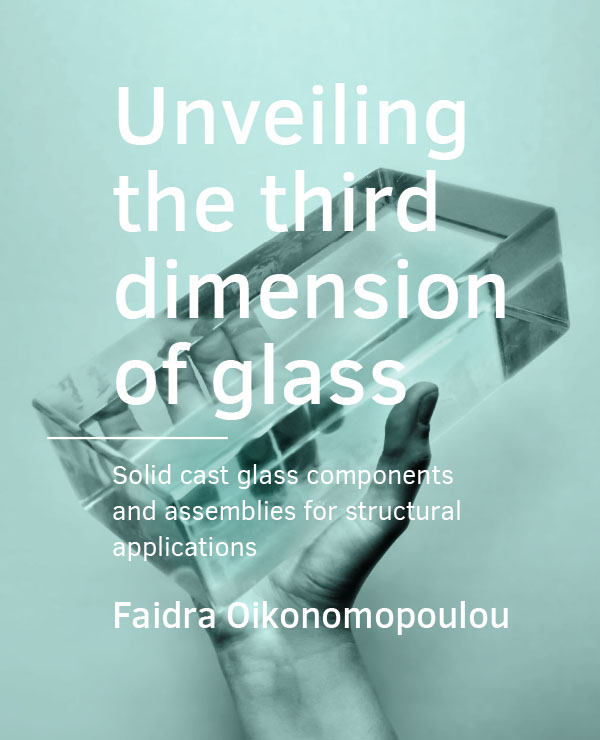Interlocking cast glass components
Main principles
DOI:
https://doi.org/10.7480/abe.2019.9.4093Abstract
In this chapter a novel, reversible all-glass system consisting of dry-assembly, interlocking cast glass components is introduced that can tackle the irreversibility, strict tolerances and meticulous construction process of the adhesively bonded system presented in Chapters 5 and 6. Thanks to the interlocking geometry, the proposed system can attain the desired stiffness with the aid of minimal, if any, metal framing. The integrity and structural stability of the assembly is provided by the shape and the arrangement of the blocks themselves. The use of adhesives is obviated in the system by employing a dry, colourless interlayer as an intermediate medium between the glass components. The deformation of the interlayer can compensate for surface asperities and dimensional tolerances, allowing for an even stress distribution. Moreover, the dry-assembly enables the structure to be dis- and reassembled, which is critical for a circular economy in the built environment. Accordingly, this chapter lists the key considerations and establishes the design criteria for the development of interlocking cast glass structures. Based on the established criteria, various component geometries, forms and interlocking mechanisms are developed. The interlocking forms are kiln cast in 1:2 scale and are comparatively assessed in terms of mechanical interlocking capacity, mass distribution, residual stress generation and ease of fabrication. In parallel, a literature research is conducted on different materials for the dry, transparent interlayer, concluding that interlayers of the polyurethane family (PU and TPU) present the highest potential for a building application. From the developed designs, osteomorphic blocks are selected as the most promising concept to be further investigated.

